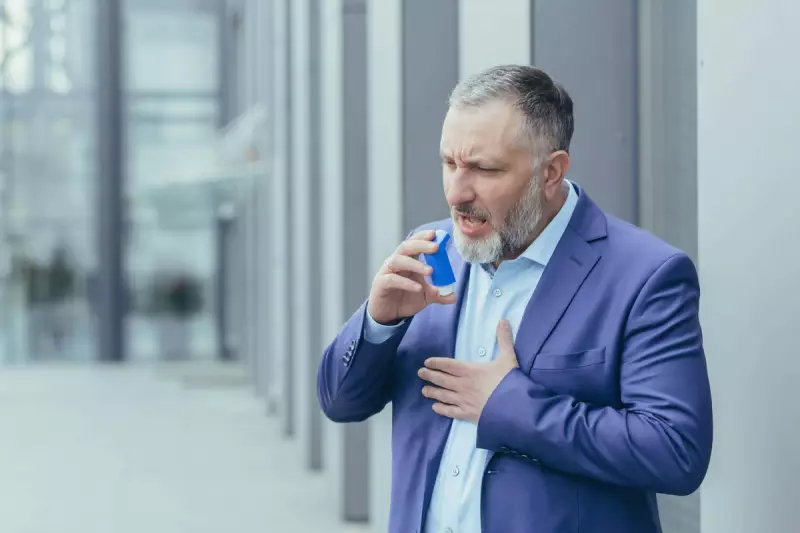
As winter tightens its grip, a sharp, chilling breath can feel more alarming than usual. For many, this sensation is a temporary discomfort, but for a growing number, it signals a serious medical crisis requiring immediate attention.
Sharp Rise in Respiratory Emergencies
Startling new data from Asthma and Lung UK reveals a 23% increase in emergency hospital admissions for respiratory conditions over the last two years. In concrete terms, England saw 2,268,865 such admissions between April 2024 and March 2025, a stark rise of 427,855 from the 1,841,010 recorded between April 2022 and March 2023.
This dramatic upturn underscores the vital importance of recognising when shortness of breath is more than just a winter chill. We consulted Dr Andy Whittamore, a GP and clinical lead at Asthma + Lung UK, to outline the critical red flags that demand an urgent response.
Five Critical Signs of a Breathing Emergency
Dr Whittamore emphasises that certain symptoms should never be dismissed, especially during the colder months when respiratory systems are under increased strain.
1. Severe Breathlessness
"If you are severely breathless, or if it’s come on very, very quickly so you can’t complete full sentences, that can be a particular sign you are having more of a life-threatening attack on your breathing," Dr Whittamore highlights. This isn't just feeling a bit puffed out; it's a profound inability to draw a proper breath.
2. Tight or Painful Chest
A sensation of pressure or pain in the chest is a major warning sign. "That sort of discomfort could be a sign of an asthma attack, or an infection like pneumonia, or even a heart problem," notes Dr Whittamore. It's a symptom that connects lung and heart health, making prompt assessment essential.
3. Blue Lips, Tongue or Fingertips
This symptom, known medically as cyanosis, is a clear indicator of dangerously low oxygen levels in the blood. "If you also experience breathlessness with that, then that’s an emergency that requires immediate intervention," Dr Whittamore states unequivocally.
4. Fast or Noisy Breathing
Listen to your breathing. The sudden onset of wheezing, or breathing that becomes conspicuously noisy or rapid, signals that your body is fighting to get enough air. "That can be a sign you are really struggling with your breathing," says Dr Whittamore.
5. Confused, Tired or Dizzy
When breathlessness is accompanied by confusion, extreme tiredness, or dizziness, it suggests your brain and other vital organs are not receiving sufficient oxygen. "That’s a sign that your body is really struggling to get oxygen to where it’s needed," Dr Whittamore explains.
What to Do in a Breathing Crisis
If you experience any of these severe symptoms, Dr Whittamore's advice is clear and actionable. "One of the hardest but most important things to do is to try and stay calm," he says. "Panicking can actually make your breathlessness worse. Try to stop, sit upright and stay as calm as possible."
If you have a reliever inhaler, use it immediately and follow your pre-established asthma or COPD action plan. However, if symptoms are severe or worsening, do not hesitate to seek urgent medical help. "Always call an ambulance if it’s very severe or if you are really struggling," Dr Whittamore advises. "You can always cancel an ambulance, but you can never get an ambulance when it’s too late."
The Dangers of Delay
Waiting to see if symptoms improve can have grave consequences. "A lot of these things can be life-threatening, so it's really important to seek medical advice as soon as possible," warns Dr Whittamore. Some conditions become significantly harder to treat the longer they are left.
The strain of struggling to breathe extends beyond the lungs. "If the brain and heart aren’t getting enough oxygen or are working even harder, it can actually cause heart complications like heart attacks," Dr Whittamore reveals. Immediate help is crucial to prevent lasting damage to tissues in the lungs and heart.
Why Winter Poses a Greater Threat
"People with underlying lung conditions can struggle at any time during the year, but in winter we see a lot more people in the GP surgery, in A&E departments and actually admitted to hospital as well," Dr Whittamore confirms. The season brings a confluence of triggers, including a higher prevalence of viruses and infections that can rapidly escalate minor issues into severe health emergencies.
Protecting Your Lungs This Winter
Proactive steps can significantly reduce your risk of a respiratory crisis during the colder months.
Take Your Inhaler Regularly
For those with asthma or COPD, consistency with preventer inhalers is key. "Carry your reliever inhaler with you all the time because you never know when one of the triggers is going to catch you out," Dr Whittamore advises.
Get Vaccinated
Staying up to date with winter vaccines—for flu, Covid, RSV, and pneumococcal disease—is a powerful defensive measure. While they may not prevent every infection, they dramatically reduce the severity of illness.
Stay Warm and Ventilated
Keep your home heated and ensure you wrap up warmly when going outside. Simultaneously, maintain good ventilation in your home to prevent dampness and remove moisture from daily activities like cooking.
Flag Changes to Your GP
Finally, Dr Whittamore urges people to seek early advice. "If your asthma or COPD isn’t behaving as it normally does, or even if you are getting breathlessness for the first time... seek help before it gets worse as these things are much easier to treat early on."
For further guidance on safeguarding your respiratory health, visit asthmaandlung.org.uk/withyouthiswinter.





